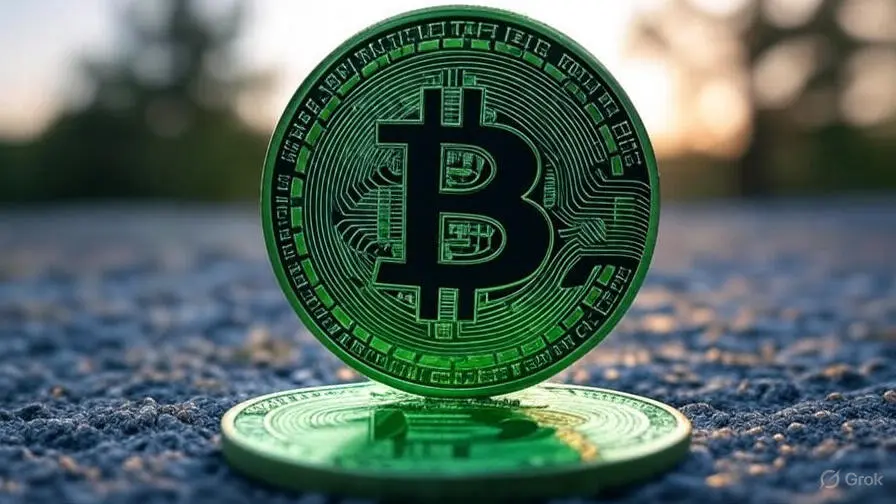Bitcoin, the world’s first cryptocurrency, continues to captivate investors and enthusiasts as of July 2025. With its value surpassing $117,000 and a market cap exceeding $2 trillion, understanding how to buy and sell Bitcoin has become essential for anyone looking to enter the crypto space. This guide provides a step-by-step approach to purchasing and selling Bitcoin safely, exploring the best tools, security practices, and current trends to help you navigate this dynamic market.
Why Bitcoin Matters in 2025
Bitcoin’s decentralized nature, powered by blockchain technology, offers a hedge against inflation and a alternative to traditional finance. As adoption grows—with over 50 million U.S. citizens owning BTC by mid-2025—learning how to buy and sell Bitcoin is more relevant than ever. Whether you’re a beginner or an experienced trader, this guide ensures you’re equipped with the latest insights to make informed decisions.
How to Buy Bitcoin: Step-by-Step Process
Step 1: Choose a Reliable Crypto Exchange
The first step to buy Bitcoin is selecting a reputable cryptocurrency exchange. Popular options include Coinbase, Binance, Kraken, and Bitstamp, known for their user-friendly interfaces and robust security. Newer platforms like River and Bitcoin Well are gaining traction for their simplicity and competitive fees. Compare factors like transaction fees (typically 0.1% to 1%) and supported payment methods before signing up.
Step 2: Create and Verify Your Account
After choosing an exchange, register with your email and create a strong password. Most platforms require identity verification (KYC) due to regulatory standards, involving uploading a government-issued ID and proof of address. This process, which can take minutes to a few days, ensures compliance and protects against fraud.
Step 3: Deposit Funds
Fund your account using bank transfers, credit/debit cards, or payment apps like PayPal (where available). Bank transfers are often the cheapest option, though they may take 1-3 business days. Card payments offer instant funding but come with higher fees (2%-5%). Check each exchange’s deposit limits and processing times.
Step 4: Purchase Bitcoin
Once funded, navigate to the trading section and select Bitcoin (BTC). Enter the amount you wish to buy in USD or your local currency. You can opt for a market order (buy at the current price) or a limit order (set your desired price). Review the transaction details and confirm. Your Bitcoin will appear in your exchange wallet shortly.
Step 5: Secure Your Bitcoin
For safety, transfer your Bitcoin to a personal wallet. Hot wallets (e.g., Trust Wallet, BlueWallet) are convenient for small amounts, while cold wallets (e.g., Ledger, Trezor) offer offline storage for larger holdings. Never leave significant amounts on an exchange due to hacking risks.
How to Sell Bitcoin: Step-by-Step Process
Step 1: Select a Selling Platform
You can sell Bitcoin on the same exchange where you bought it or use peer-to-peer (P2P) platforms like LocalBitcoins or Paxful. P2P allows direct trades with individuals, often at better rates, but requires caution to avoid scams.
Step 2: Transfer Bitcoin to the Exchange
Move your Bitcoin from your wallet to the exchange’s wallet. This process, depending on network congestion, can take 10 minutes to an hour. Ensure you double-check the wallet address to avoid errors.
Step 3: Place a Sell Order
Go to the trading section, select “Sell,” and choose Bitcoin. Decide between a market order (sell at the current price) or a limit order (set your target price). Input the amount and confirm. The sale is typically processed instantly for market orders.
Step 4: Withdraw Funds
After selling, withdraw your proceeds to your bank account or payment app. Bank transfers may take 1-5 days, while some platforms offer instant cashout options with fees. Verify withdrawal limits and any associated costs.
Step 5: Monitor and Optimize
Track market trends using tools like CoinMarketCap or TradingView. Selling during a price surge can maximize profits, but timing the market is challenging. Consider tax implications—most countries require reporting crypto gains.
Essential Tools for Bitcoin Trading
Crypto Wallets
Wallets are crucial for storing Bitcoin. Mobile wallets like EdgeWallet offer ease of use, while hardware wallets provide maximum security. Choose based on your investment size and security needs.
Trading Platforms
Beyond exchanges, advanced traders use platforms like Gemini ActiveTrader or Bitfinex for detailed charts and lower fees. These are ideal for high-volume Bitcoin trading.
Security Practices
Enable two-factor authentication (2FA) on all accounts, use a VPN for privacy, and avoid sharing private keys. Regularly update software to protect against vulnerabilities.
Benefits and Risks of Buying and Selling Bitcoin
Benefits
- Decentralization: No central authority controls Bitcoin, offering financial freedom.
- High Returns: Early investors saw gains of over 10,000% since 2010.
- Global Access: Trade 24/7 from anywhere with internet access.
Risks
- Volatility: Prices can swing 10% in a day, as seen in the 2024 bull run.
- Regulatory Uncertainty: Governments may impose restrictions, impacting value.
- Security Threats: Hacks and phishing attacks target inexperienced users.
Current Trends in Bitcoin Trading (July 2025)
Institutional Adoption
Major firms like BlackRock and Fidelity have increased Bitcoin holdings, with ETFs driving a 30% price surge in 2025. This trend signals growing legitimacy.
Halving Impact
The 2024 halving reduced mining rewards, tightening supply and pushing prices upward. Analysts predict further growth as the 21 million cap nears.
Payment Integration
Businesses like Tesla and Starbucks now accept Bitcoin, expanding its utility and boosting demand.
Tips for Successful Bitcoin Trading
- Start Small: Begin with a small investment to learn the market.
- Diversify: Balance Bitcoin with other assets to mitigate risk.
- Stay Informed: Follow crypto news on X and reputable sites like CoinDesk.
- Avoid FOMO: Don’t buy during hype cycles without research.
Common Mistakes to Avoid
- Ignoring Fees: High transaction fees can erode profits—compare platforms.
- Overtrading: Frequent buying and selling increases costs and stress.
- Poor Security: Losing access to your wallet can mean permanent loss.
The Future of Bitcoin Trading
By 2026, experts predict Bitcoin could reach $150,000, driven by AI integration and global adoption. Regulatory clarity and technological upgrades, like the Lightning Network, will enhance scalability. Staying updated will be key to capitalizing on these opportunities.
Conclusion: Mastering Bitcoin Transactions
Learning how to buy and sell Bitcoin opens doors to a new financial frontier. With the right tools, security measures, and market awareness, you can navigate this space confidently. As Bitcoin evolves in 2025, its potential as a store of value and medium of exchange grows. Start your journey today, but proceed with caution and education.
Whether you’re cashing in on a bull run or building long-term wealth, Bitcoin offers unparalleled opportunities. Are you ready to dive into the crypto market?



